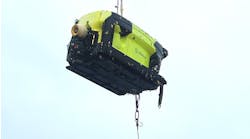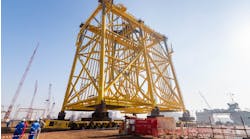Baker Hughes VP comments on new artificial lift technology center
Offshore staff
HOUSTON – Baker Hughes recently opened its Artificial Lift Research & Technology Center in Claremore, Oklahoma. The $60-million facility is designed to enhance artificial lift R&D and spur new product development.
Wade Welborn, BakerHughes vice president of Artificial Lift Systems, described the capabilities of the new facility in an exclusive interview withOffshore at CERAWeek 2014. “There is nothing like it,” said Welborn. “The ALRTC was built with vision for the future.”
As the name indicates, the facility is for artificial lift R&D and new product development, and for AL and production systems testing. Complete system testing is becoming the norm, especially for deepwater wells where performance and reliability are mandatory.
“Deep water is different,” Welborn observed. “Reliability is more important as we go deeper, so we maintain focus on that. The target is how to install a system and walk away, leaving it to perform.”
The key to deepwater success, he said, is in the upfront design of a system.
“Offshore wells are different to the point that artificial lift and production systems need to be fit for purpose,” he added. “With this new facility, we can test entire systems and not just individual components.”
The ALRTC’s design makes it possible to simulate system deployment and intervention capabilities to prove the designs and to acquire the approvals necessary to proceed in today’s operating environment.
The Claremore, Oklahoma, facility was built with this in mind. There are seven test wells inside the building. Those wells range from 400 ft to 870 ft in depth. Casings sizes from 24-in. to 40-in. can be handled. The wells are used to test everything from a single electrical submersible pumping (ESP) system component to a full production system comprised of artificial lift and completion equipment.
Among its other capabilities, the center includes:
- Fully-equipped control room for test monitoring
- Customer test viewing rooms
- Dedicated assembly and teardown area
- Research areas with laboratories dedicated to fiber optics, electronics, calibration, and prototypes
- Fully functioning assembly, testing, and teardown areas adjacent to the test wells
- Motor-winding area, welding shop, and machine shop.
“With this new facility, we have the capacity to manufacture one-off tools and equipment for testing,” said Welborn.
“Technology is driving the industry forward. With the ALRTC adjacent to our manufacturing plant, we can combine the best scientists and engineers with the necessary tools and equipment in an industry leading facility.”
4/3/14



